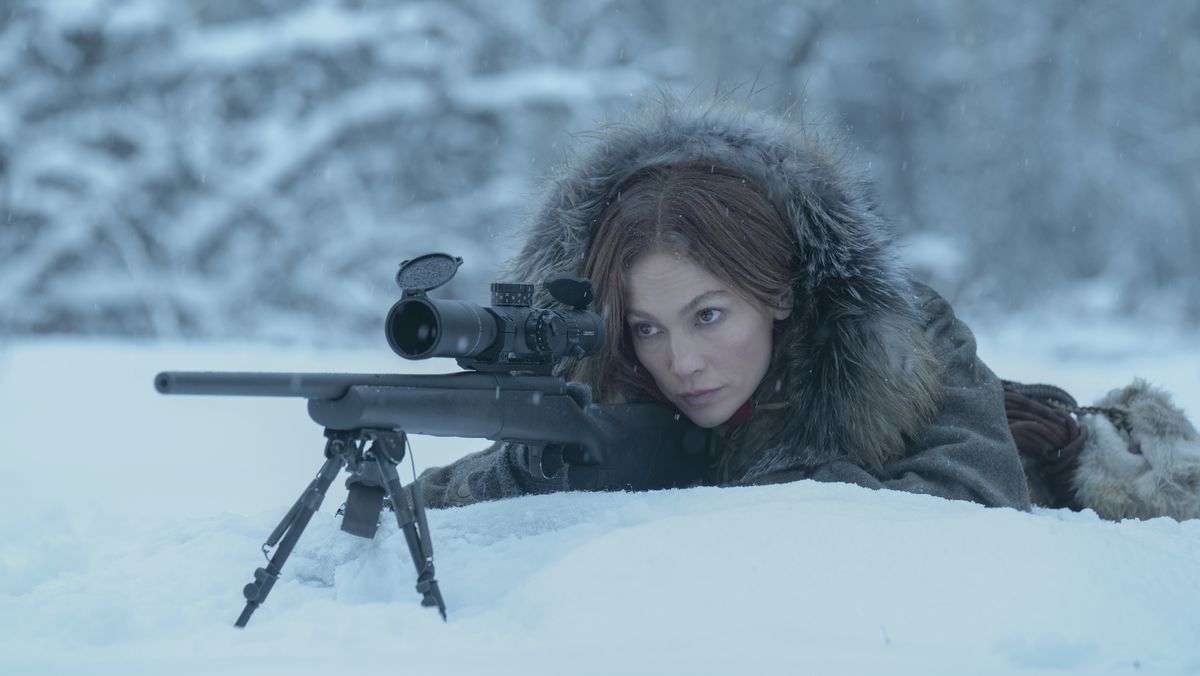is a chilling and atmospheric psychological horror film directed by Emma Tammi in her feature debut and written by Teresa Sutherland. Set against the stark and desolate backdrop of the American frontier in the late 1800s, the film explores isolation, paranoia, and the unseen terrors that can grow in solitude. Blending traditional horror with feminist themes, The Wind offers a fresh take on the genre, presenting a haunting story through the eyes of a woman unraveling at the edge of civilization.
The story follows Lizzy Macklin, played by Caitlin Gerard, a tough and resourceful pioneer woman who settles in an unpopulated region of New Mexico with her husband Isaac. The couple lives in near total isolation, surrounded by endless plains and exposed to the harshness of nature. When another young couple, Emma and Gideon, moves into a nearby cabin, Lizzy finds herself both intrigued and unsettled by their presence. As strange events begin to occur and Emma’s mental state deteriorates, Lizzy becomes convinced that a supernatural force is haunting the prairie. However, as the film unfolds, the line between reality and imagination blurs, leaving the audience unsure whether Lizzy is experiencing something truly otherworldly or if she is losing her grip on sanity.
One of the most striking aspects of The Wind is its setting. The barren landscapes and relentless wind create a powerful sense of unease and vulnerability. Without the distractions of modern life or the safety of a community, Lizzy is left alone with her thoughts, fears, and memories. The cinematography by Lyn Moncrief enhances this isolation with wide shots of the plains, dim candlelit interiors, and clever use of shadows and silence. The wind itself becomes a character in the film, a constant, howling presence that seems to whisper and watch, heightening the atmosphere of dread.

Caitlin Gerard delivers a standout performance as Lizzy. Her portrayal is nuanced and emotionally raw, capturing the quiet strength of a woman who must face not only the physical demands of frontier life but also the psychological toll of grief, loneliness, and fear. As the film jumps between past and present, Gerard anchors the nonlinear narrative with a performance that is both restrained and powerful.
While The Wind includes traditional horror elements such as demonic presences and ghostly apparitions, its true horror lies in the emotional and psychological depths it explores. The film delves into themes of postpartum depression, gender roles, religious superstition, and the mental strain of domestic confinement. Rather than offering simple jump scares, it opts for a slow, immersive build that unsettles the viewer through suggestion, ambiguity, and emotional tension.

In conclusion, The Wind is a thoughtful and eerie addition to the horror genre, distinguished by its strong direction, evocative visuals, and compelling central performance. It tells a story not just of a haunted house or a cursed land, but of a woman haunted by loss, isolation, and the silence of an uncaring world. For those who appreciate psychological horror rooted in character and atmosphere, The Wind is a haunting experience that lingers long after the final frame.


